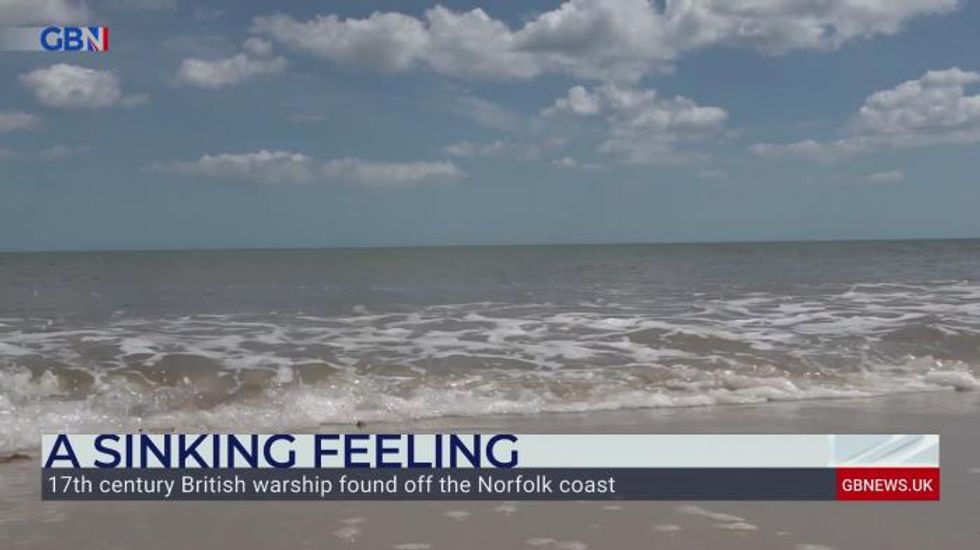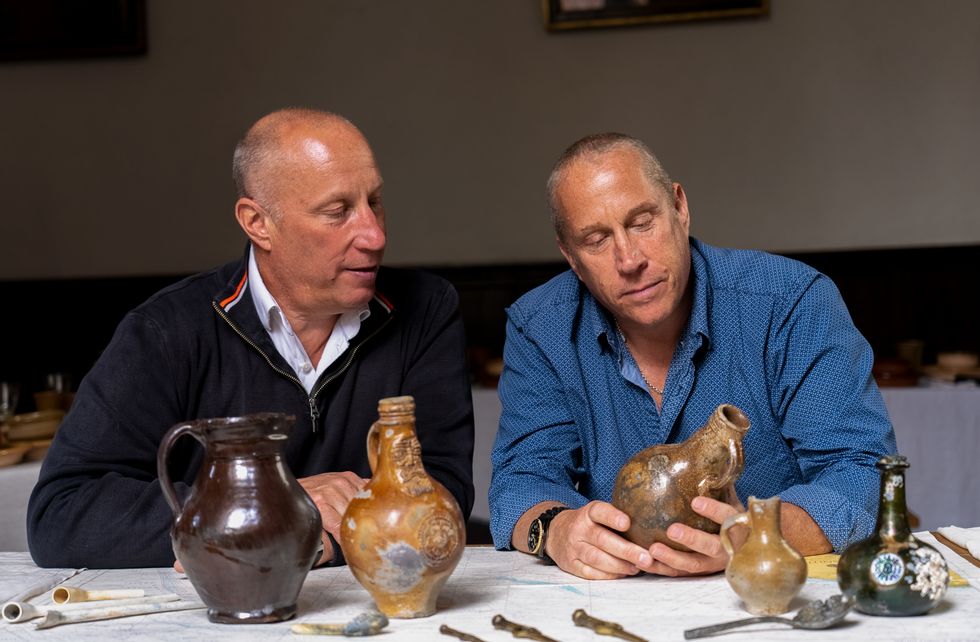Don't Miss
Most Read
Trending on GB News
The wreck of a former royal warship, which sank in 1682, has been discovered by two amateur divers off the coast of Norfolk.
HMS Gloucester ran aground roughy 28 miles off the coast of Great Yarmouth following a dispute between James, the then Duke of York, and the ship's captain James Ayres, about navigating the infamous Norfolk sandbanks.
The wreck of the HMS Gloucester was discovered by brothers Julian and Lincoln Barnwell, alongside others, after an extensive four-year search which covered over 5,000 nautical miles.
The site was uncovered in 2007, but lengthy identity checks, accompanied by the need to protect the "at risk" site, which lies in international waters, meant the discovery could only be made public now.
Brothers Julian and Lincoln Barnwellwith with a bell from the wreck of the HMS Gloucester
UEA
In an interview with GB News East of England correspondent Ed Crawford, the brothers described their emotions upon initially discovering the wreckage.
Artefacts from the HMS Gloucester were surfaced by the brothers
UEA
The brothers, who were accompanied by their dad on the dive, were "excited" when they discovered the wreckage, deeming it a "lightbulb moment" in their search for old shipwrecks.
Deeming their discovery a "diver's dream", the brothers have sparked excitement among historians who are intrigued to see the shipwreck for themselves.
Professor of History at the University of East Anglia, Claire Jowitt, said the artefacts discovered are "unparalleled in their diversity and in terms of their richness".
A canon from the ship was discovered on the sea bed
Norfolk Historic Shipwrecks
She added how the former royal vessel provided historians with a "a time capsule" of how travel took place during the 17th century.
Professor Jowitt deemed the discovery the most important maritime discovery since the Mary Rose, the warship from the Tudor navy of King Henry VIII.
The Mary Rose sank in battle in the Solent in 1545, and was brought to shore in 1982, later being put on display in Portsmouth.
Within an hour of striking the sandbank, the HMS Gloucester sunk, killing around 130 to 250 crew and passengers.
The Duke of York barely survived, costing the lives of many crew and passengers, by choosing to depart last, with those on board drowning while adhering to protocol for not abandoning ship before royalty.
He accepted no blame to the sinking, instead criticising the captain, wishing him to be hanged, but Mr Ayres was court-martialled and imprisoned.
Artefacts which have already been removed from the seabed will be displayed in a jointly curated exhibition at the Norwich Castle Museum and Art Gallery, from spring next year.
The ship itself is fragmented and remains on the seafloor, with authorities adding that there are currently no plans to bring any part of the remains to land.
HMS Gloucester represents an "almost" moment in British political history, as it nearly caused the death of the Catholic heir to the Protestant throne at a time of great political and religious tension.
The exact location of the wreck remains protected.













